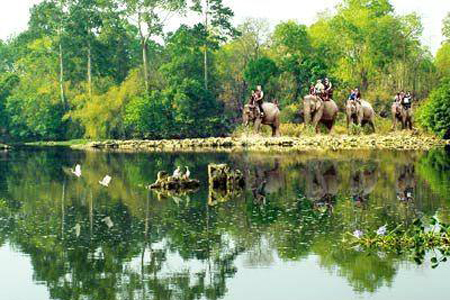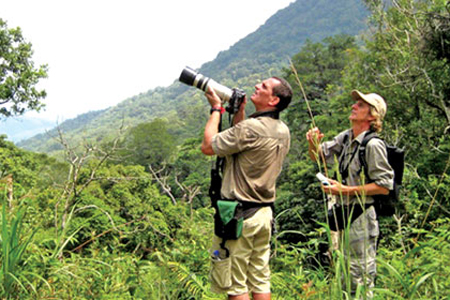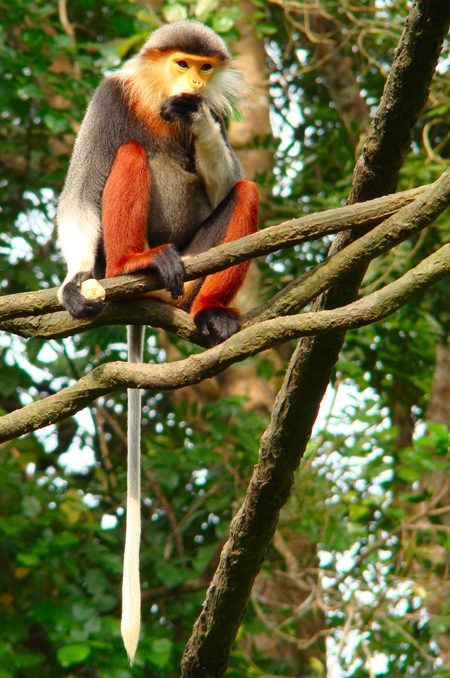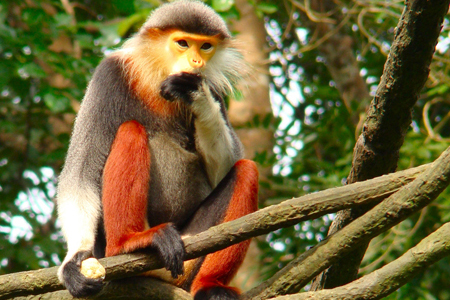"I was lucky. Those endangered primates are so afraid of humans, they will run from anything that may threaten them," explains Tran Huu Vy.
"The existence of such a crowd of langurs is evidence of over effective environmental protection and the park's rich biodiversity," he says.

The 42,000-ha Kon Ka Kinh National Park in the Central Highlands province of Gia Lai has been a safe haven for about 250 gray-shanked douc langurs (pygathrix cinerea) - the world's largest troop living in the central region of Viet Nam.
Vy and his German colleagues from the Frankfurt Zoological Society's Viet Nam Primate Conservation Programme have pursued a long-term conservation, protection and education programme on the gray-shanked douc langur in the park since 2006.
Experts Conservation Programme now say the park is home to around 1,000 gray-shanked doucs spread across five provinces, including Quang Nam, Quang Ngai, Binh Dinh, Kon Tum and Gia Lai. Currently, Gia Lai's Kon Ka Kinh park preserves the largest number of langurs.

"We counted 250 langurs living in the park. We also found species of the most endangered primates living in the park, including three kinds of monkey (Macaca leonia, Macaca artoides and Macara mulatta), two species of loris (Nycticebus bengalensis and Nycticebus pygmaeus) and gibbons (Nomascus leucogienys leucogienys)," Vy said.
The gray-shanked douc langur is listed on the International Union for Conservation of Nature (IUNC) Red List as one of the world's 25 critically endangered primates.
Ha Thang Long, head of the representative office of the Frankfurt Zoological Society in Viet Nam, who is an authority on gray-shanked douc studies, began the conservation programme to protect the primate species in 2006.
"Langurs can only be seen in the central region of Viet Nam, and Kon Ka Kinh park conserves the largest number of endangered primates in the country," Long says.

"This is why the Frankfurt Zoological Society has come to protect the gray-shanked doucs and the park's rich biodiversity."

